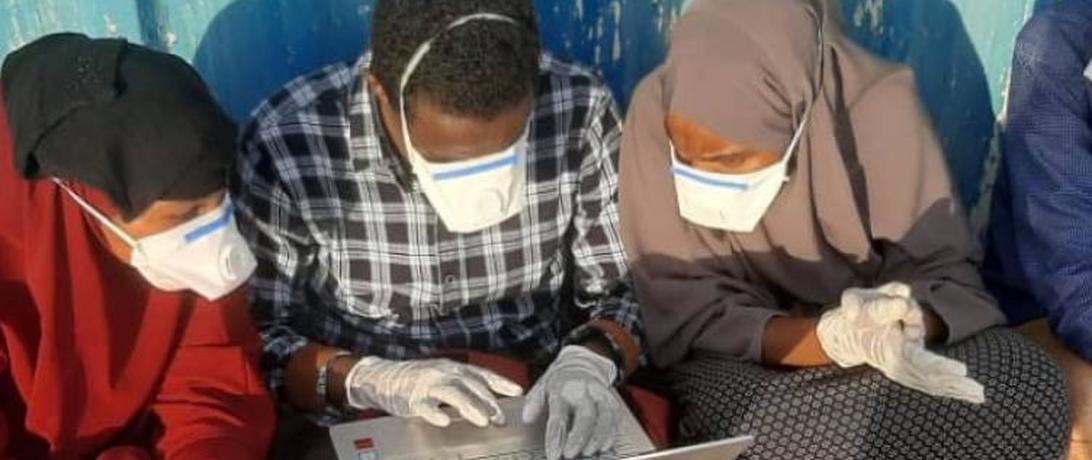
Secure Fisheries Project Kalluun, a partnership with four Somali universities and Somali fisheries ministries, aims to enhance fisheries data collection throughout the region and train the next generation of Somali marine scientists. As participants in the project, students gain training from Secure Fisheries and hands-on experience conducting routine catch data collection at their local landing site.
By Jamal Hassan
Project Kalluun is an effort by Secure Fisheries, students and faculty at Somali universities, and the Somali ministries of fisheries to collect data on fish catch in Somali waters in a standardized manner that is useful for resource management. Its goal is to improve fisheries data collection throughout the Somali region and train the next generation of Somali marine scientists on fisheries research methods and principles through hands-on experience. Students collect data at landing sites near their universities in the Somali region: Berbera Maritime and Fisheries Academy (Berbera, Somaliland), East Africa University (Bosaso, Puntland), Kismayo University (Kismayo, Jubaland) and City University (Mogadishu, Benadir Regional Administration).
At each location, students trained by Secure Fisheries conduct routine catch data collection at their local landing sites on a monthly basis. They collect data on the types and quantities of fish being landed by fishing boats and corresponding biometric data ( i.e. lengths and weights) of the fish. The data is stored in a database housed at Secure Fisheries, which will serve stakeholders as the basis for fisheries management planning.
The project includes a lecture series on marine science and fisheries topics given by academics and students from the participating institutions, as well as project staff from Secure Fisheries. It is very popular with the students and has served as a useful platform for speakers to present their research findings as well as a forum for discussion of marine science and environmental issues specific to the Somali region. The project also includes a monthly newsletter containing a summary of the data from the four locations, a featured data analysis technique, a spotlight on particular marine species, upcoming events, and links to interesting articles on fisheries.
The project is now in its third year and has yielded a valuable body of data; the students have counted over 14,000 fish since its inception. Moreover, it has trained over 30 students, giving them valuable experience in data collection and fish identification that will position them to become the fisheries officers and marine scientists of the future. The success of Project Kalluun was the basis for the development of a broader national data collection effort in the Somali region which is now underway.
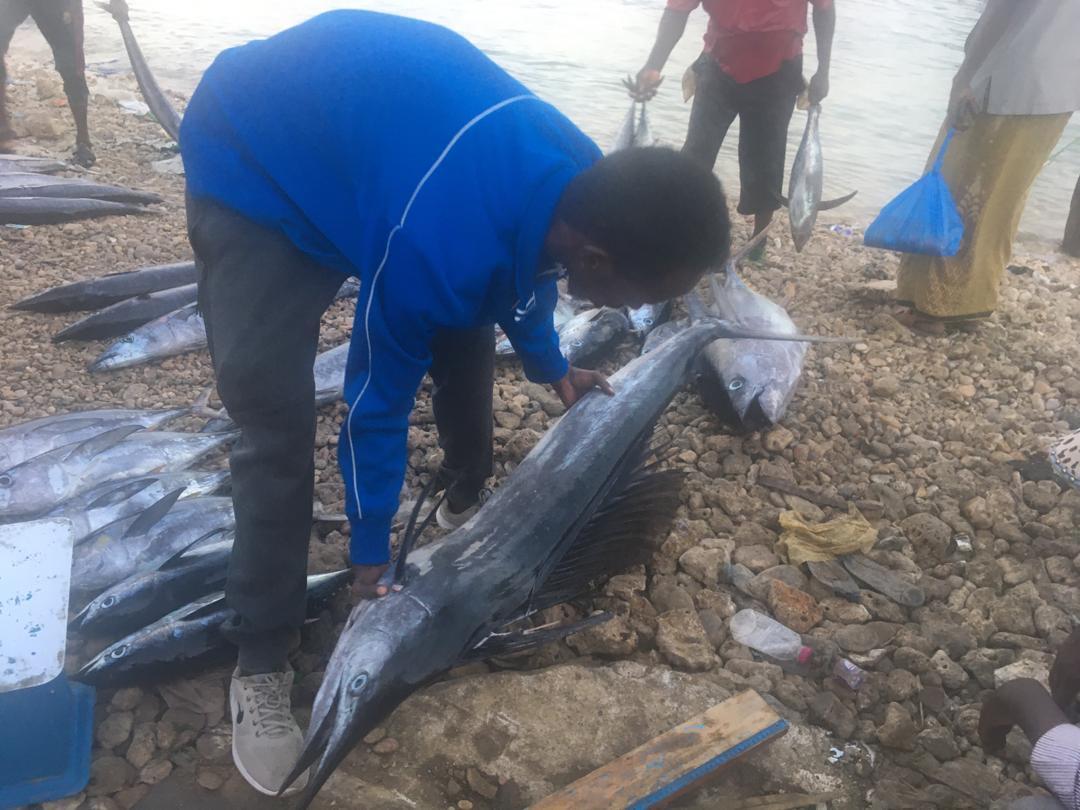
In 2021, the project was aligned with the Pew Project Fellowship, led by Dr. Nina Wambiji from the Kenya Marine and Fisheries Research Institute (KMFRI), for research on “strengthening data collection and capacity building for effective conservation and management of billfish fisheries in the Western Indian Ocean region.”
As part of this collaborative research effort, the students are conducting additional data collection specifically on billfish (e.g. sailfish, swordfish, marlin), which includes the collection of billfish tissue samples from the four locations on a monthly basis. In due course, these samples will be sent to a laboratory in Kenya for DNA analysis. The research will seek to answer important questions related to the conservation of billfishes in the Western Indian Ocean.
A Summary of Project Kalluun Data
By Mohamed Abdallah Mohamed, Project Kalluun project assistant and data analyst
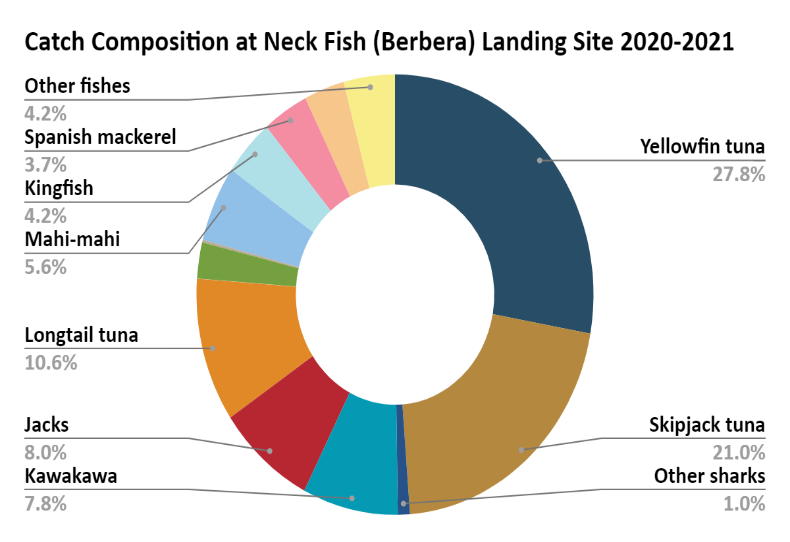
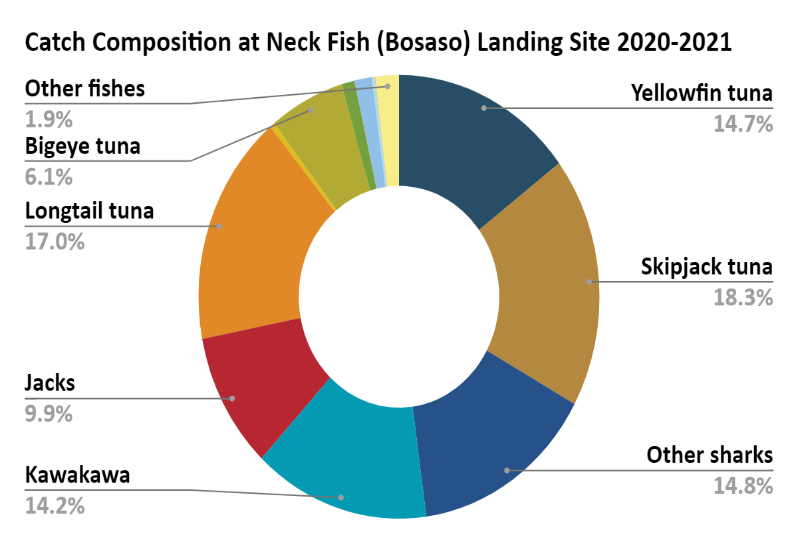
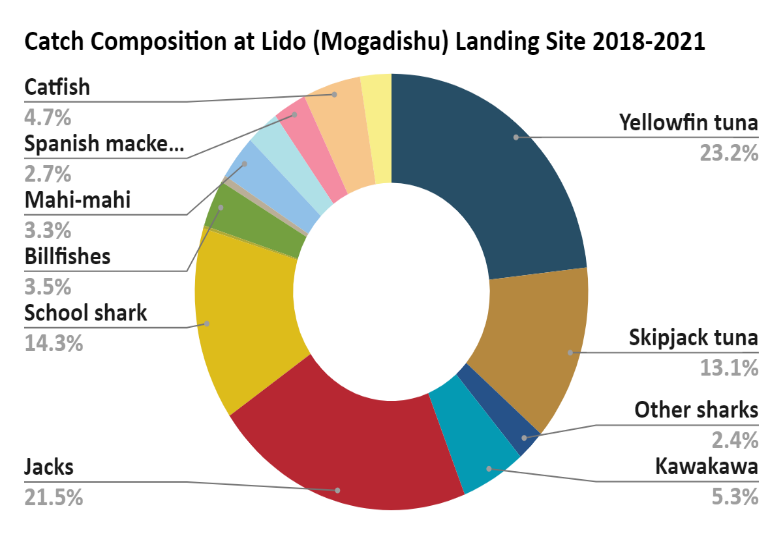
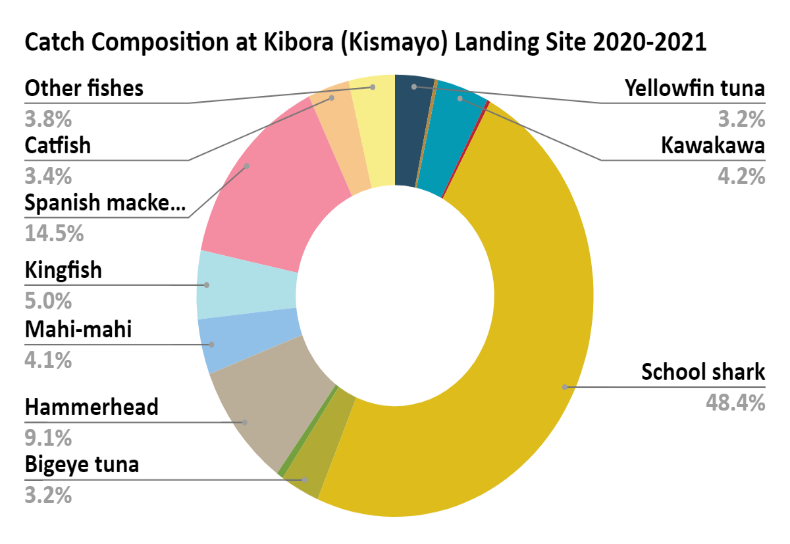
The pie charts above give a snapshot of each location’s catch composition. Yellowfin tuna, skipjack tuna, and kawakawa account for a large fraction of the catch at Mogadishu, Berbera, and Bosaso. The large number of sharks being caught─especially school sharks at Kismayo─is a concern from an ecological point of view because it puts high fishing pressure on a vulnerable species. Bosaso and Berbera are close in geographical proximity on the Gulf of Aden, so their similar catch compositions are unsurprising. Tuna species account for nearly two-thirds of the catch at these two landing sites.
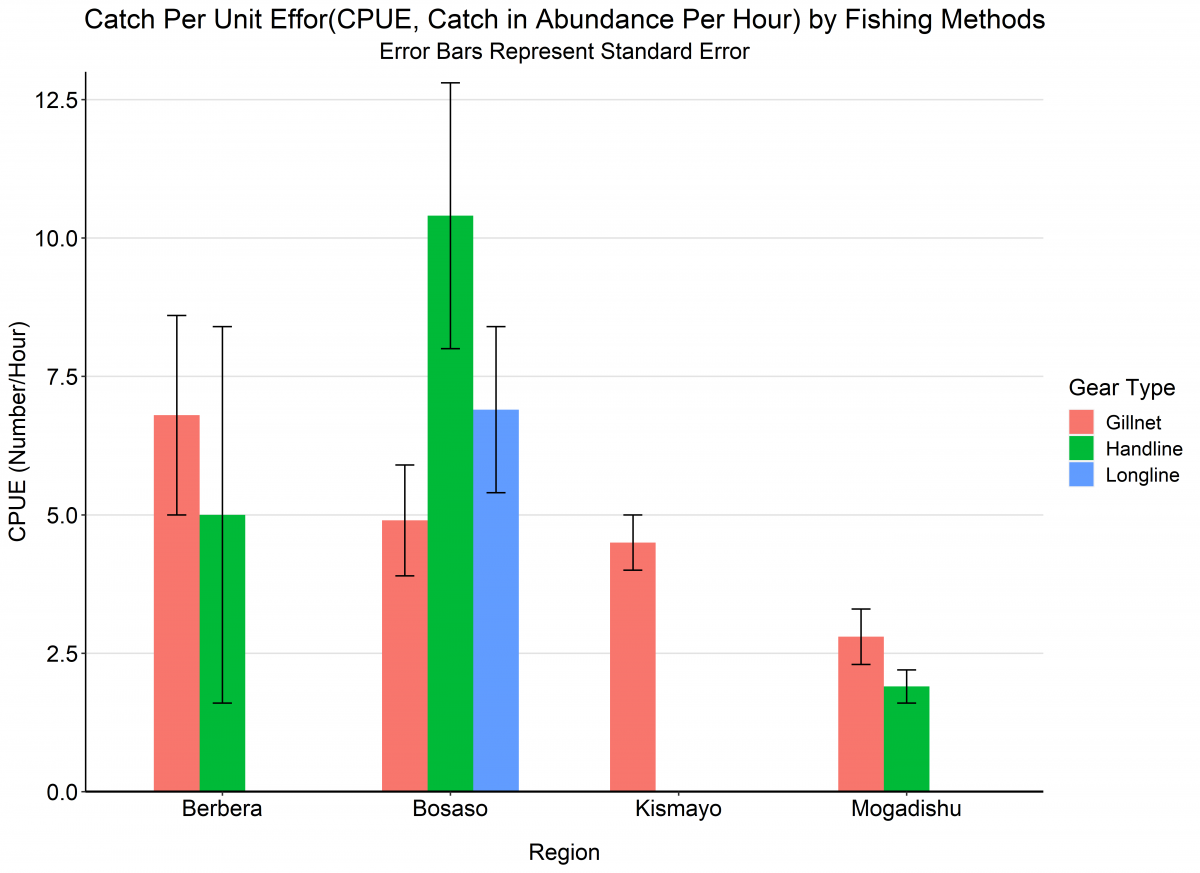
The catch per unit effort (CPUE) parameter is an indirect measure of abundance; it gives a standardized indication of the ease with which fishers are catching fish per unit time, according to their fishing gear. The figure above shows the CPUE by fishing gear, across all four locations. The fishing gear used at Berbera and Bosaso had a relatively high CPUE, but their values also have higher standard errors, implying that the catch per gear, especially handline, is more unpredictable and volatile. In comparison, gears employed at Kismayo and Mogadishu have a lower CPUE, with Mogadishu having the lowest, but their standard error margins are less, indicating more consistent and reliable, though smaller, catches in those locations.
CPUE is used to assess the status of fish stocks through a sustainable management lens by making all data from different locations and gear types comparable, offering a broad assessment of fish catch throughout the region which is necessary for future large-scale management measures to be enacted.
By allowing this level of analysis and building the skills of Somali scientists, Project Kalluun is continuing to yield a body of valuable fish catch data that will provide stakeholders with answers to important questions pertaining to the sustainability of fish stocks in the Somali region.
Article Details
Published
Topic
Program
Content Type
Opinion & Insights